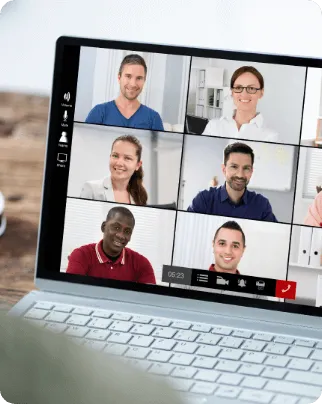The First Step Is The One You Believe In, But The Second One Might Be Profound!
WHAT WE DO
BLUE PHOENIX COACHING & BLUE PHOENIX ACADEMY
Our Services - Blue Phoenix Coaching
STILL NOT SURE?
Frequently Asked Questions
We understand that you may have questions. Well, we have answers.
Check out our FAQ's and if you still have questions, please don't hesitate to contact us.
Question 1: How do you lorem ipsum?
Lorem ipsum dolor sit amet, consectetur adipisicing elit. Autem dolore, alias, numquam enim ab voluptate id quam harum ducimus cupiditate similique quisquam et deserunt, recusandae.
Question 2: What do you lorem ipsum?
Lorem ipsum dolor sit amet, consectetur adipisicing elit. Autem dolore, alias, numquam enim ab voluptate id quam harum ducimus cupiditate similique quisquam et deserunt, recusandae.
Question 3: When can I lorem ipsum when I buy?
Lorem ipsum dolor sit amet, consectetur adipisicing elit. Autem dolore, alias, numquam enim ab voluptate id quam harum ducimus cupiditate similique quisquam et deserunt, recusandae.
Question 4: What if I feel stuck with lorem ipsum?
Lorem ipsum dolor sit amet, consectetur adipisicing elit. Autem dolore, alias, numquam enim ab voluptate id quam harum ducimus cupiditate similique quisquam et deserunt, recusandae.

Service 1
Lorem ipsum dolor sit amet

Service 2
Lorem ipsum dolor sit amet

Service 3
Lorem ipsum dolor sit amet

Service 4
Lorem ipsum dolor sit amet

Service 5
Lorem ipsum dolor sit amet

Service 6
Lorem ipsum dolor sit amet

Service 7
Lorem ipsum dolor sit amet

Service 8
Lorem ipsum dolor sit amet

Enhancing Communication and Collaboration
In today's interconnected and fast-paced business environment, effective communication and collaboration have become paramount for organizational success. Effective communication fosters clarity, alignment, and trust, while collaboration encourages innovation, problem-solving, and synergy among team members.
In this blog, we will discuss enhancing communication and collaboration within organizations and exploring strategies for driving productivity and engagement.
The Importance of Communication
Communication serves as the foundation of all interactions within an organization. Clear and transparent communication ensures that messages are understood, expectations are clarified, and information is shared effectively among stakeholders.
Effective communication promotes a culture of openness, trust, and accountability, where employees feel valued, heard, and empowered to contribute their ideas and insights. Moreover, it facilitates alignment around common goals and objectives, enabling teams to work cohesively towards shared outcomes.
The Power of Collaboration
Collaboration brings together diverse perspectives, expertise, and resources to tackle complex challenges and drive innovation. Let us discuss the power of collaboration in detail:
1. Synergistic Problem-Solving and Innovation:
Collaboration harnesses diverse perspectives, expertise, and resources, enabling teams to tackle complex challenges and generate innovative solutions. Through collaborative efforts, organizations leverage the collective intelligence and creativity of their workforce, leading to more effective problem-solving and breakthrough innovations.
2. Cross-Functional Knowledge Sharing and Learning:
Collaboration facilitates knowledge sharing and learning across different departments and functions within an organization. Encouraging collaboration breaks down silos and promotes the exchange of ideas, best practices, and lessons learned.
This cross-functional collaboration enhances employee development, fosters a culture of continuous learning, and drives organizational growth and agility.
3. Enhanced Employee Engagement and Satisfaction:
Collaboration fosters a sense of belonging and ownership among employees, leading to increased engagement and satisfaction. When employees feel valued and included in decision-making processes, they are more motivated to contribute their ideas and talents.
This sense of empowerment boosts morale and loyalty, creating a positive work environment conducive to productivity and success.
4. Accelerated Decision-Making and Execution:
Collaboration streamlines decision-making processes and accelerates the execution of initiatives within organizations. Bringing together stakeholders with diverse perspectives and expertise enables teams to assess options more thoroughly, weigh potential risks, and make informed decisions efficiently.
This collaborative approach minimizes delays, increases agility, and enables organizations to respond quickly to changing market dynamics and customer needs.
Strategies for Enhancing Communication and Collaboration
In today's interconnected and fast-paced business landscape, effective communication and collaboration are indispensable components for organizational success. Here are the key Strategies for Enhancing Communication and Collaboration:
1. Foster Open and Transparent Communication:
Encourage open dialogue and transparency at all levels of the organization. Leaders should communicate openly about goals, strategies, and challenges, providing regular updates and seeking feedback from employees. Establishing open channels of communication builds trust, fosters engagement, and ensures that information flows freely throughout the organization.
2. Leverage Technology for Communication and Collaboration:
Utilize technology tools and platforms to facilitate communication and collaboration among remote and distributed teams. Implementing tools such as instant messaging, video conferencing, and project management software enables seamless communication and real-time collaboration, regardless of physical location.
Leveraging technology helps organizations break down silos, improve coordination, and foster a culture of virtual collaboration.
3. Cultivate a Culture of Feedback and Learning:
Promote a culture where feedback is welcomed, valued, and encouraged. Encourage employees to provide constructive feedback to their peers and leaders, as well as to seek feedback for their growth and development.
Establishing a culture of continuous learning and improvement fosters personal and professional growth, enhances communication skills, and promotes a culture of accountability and excellence.
4. Create Cross-Functional Teams and Projects:
Form cross-functional teams and projects to encourage collaboration across departments and functions. Bringing together professionals with diverse backgrounds, skills, and perspectives enables organizations to foster creativity, innovation, and problem-solving.
Cross-functional teams promote knowledge sharing, break down silos, and facilitate the exchange of ideas and best practices, leading to more effective decision-making and outcomes.
5. Lead by Example:
Leaders play a crucial role in modelling and promoting effective communication and collaboration within their teams and across the organization.
Leaders should demonstrate active listening, empathy, and inclusivity, creating a culture where everyone's voice is heard and valued. Leading by example assists leaders inspire trust, fostering engagement, and creating an environment where communication and collaboration thrive.
6. Utilize Cross-Functional Workshops:
Organize workshops and training sessions that bring together employees from different departments and functions to enhance communication and collaboration skills.
These sessions provide opportunities for team members to learn from each other, share best practices, and develop a deeper understanding of diverse perspectives, fostering a culture of collaboration across the organization.
7. Implement Regular Team-Building Activities:
Organize team-building activities and events to strengthen bonds among team members and enhance communication and collaboration. Whether it's team lunches, outdoor retreats, or virtual team challenges, these activities encourage teamwork, trust-building, and rapport development.
Fostering positive relationships and camaraderie enables organizations to create a supportive environment where effective communication and collaboration thrive.
8. Establish Clear Communication Channels and Protocols:
Define clear communication channels and protocols within the organization to ensure that information flows effectively and efficiently. Whether it's through email, messaging platforms, or regular meetings, establish guidelines for how and when communication should occur.
This clarity helps streamline communication processes, reduces misunderstandings, and promotes a culture of transparency and collaboration.
Conclusion
Enhancing communication and collaboration is essential for organizational success. Prioritizing clear communication, fostering collaboration, and leveraging technology fosters a culture of trust and innovation. Through effective communication and collaboration, organizations unlock workforce potential, drive innovation, and achieve strategic objectives in a competitive business landscape.
FAQs
1. Why is effective communication important for organizational success?
Effective communication is essential for ensuring clarity, alignment, and understanding among stakeholders. It facilitates the exchange of information, ideas, and feedback, enabling teams to work cohesively towards common goals.
2. How can organizations overcome barriers to collaboration?
Organizations can overcome barriers to collaboration by fostering a culture of trust, transparency, and inclusivity. Leaders should promote open communication, provide opportunities for cross-functional collaboration, and establish clear goals and expectations.
3. How can leaders encourage employees to actively participate in communication and collaboration initiatives?
Leaders inspire employee participation by emphasizing communication and collaboration's importance in achieving goals. Recognition, rewards, and a culture of psychological safety further motivate engagement in collaborative initiatives.
CONTACT US
Blue Phoenix Coaching
Main: 321-999-8787
Fax: 800-991-2996
Email: [email protected]
Support Email: [email protected]
© 2025 Blue Phoenix Coaching LLC - All Rights Reserved

